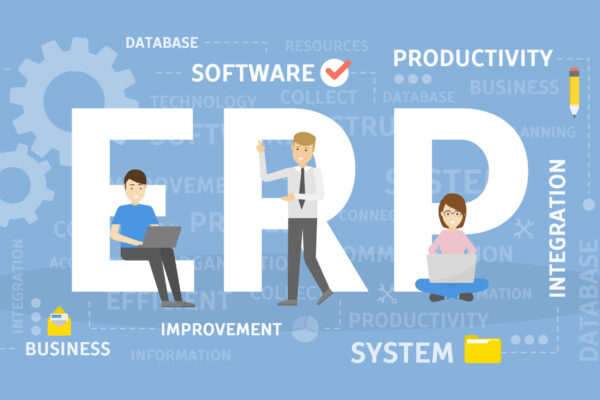Many firms have made the switch to accepting chaotic procurement management as a mode of operation. What is procurement management? If the confusion is not addressed, it only gets worse. The manual procurement management process started from a register’s page with procurement management measures is the main cause of the turmoil.
What Is Procurement Management?
Authentically integrating a strategic approach to procurement is the goal of procurement management. The main goal of procurement management is to reduce the amount of money that the company spends. The process involves sourcing, generating requests, placing the order, inspecting of the supply received, sending an invoice, and journaling the procurement process is essential. It aids in the business’s smooth operation while also providing a number of other advantages. Higher success rates and process efficiency are guaranteed by a well-managed procurement process. Additionally, it guarantees cost-effectiveness and cost savings for the organization. Delays in procurement are frequently the biggest problem an organization has. A properly run procurement process will aid the organization in avoiding delays with sourcing, ordering, receiving, inspecting, and billing.
Procurement’s Role & Importance
The importance of procurement management has already been mentioned, but let’s go into more detail.
Without procurement, the majority of business operations would struggle to function successfully and efficiently. But purchasing is more than just a basic requirement for doing business. By reducing costs, preventing errors and delays, and maximizing resources, it can give businesses a competitive advantage.
Other reasons why organizations need to take procurement management seriously are:
Negotiating profitable production and supplier contracts is facilitated by it.
It drives the development of novel new techniques and is crucial to growing business operations.
By proactively collaborating with diverse suppliers, it leads corporate social responsibility and diversity.
Procurement Management Benefits
Multiple advantages come from a properly implemented procurement management process. It controls costs, lowers overall risk, and helps to increase certainty and quality. Let’s discuss these benefits in detail:
Increased certainty and quality: Procurement management aids in planning and negotiating intricate contracts. This helps boost stakeholder confidence by increasing certainty regarding the quality of purchased services and goods.
Cost management: In all businesses, cost management is the top priority. By negotiating pricing and regulating other procurement-related costs, procurement management aids in carefully managing costs. This guarantees that the business, regardless of the project, stays within budget.
Risk is diminished if an organization is clear about its suppliers, the terms of its contracts, and the caliber of its goods and services.
Assume you want to maintain the timeliness of your procurement procedure. In that case, having a well-developed and capable procurement management process is crucial.
How Does Procurement Management Operate?
A robust procurement strategy that is in line with the organizational business goals must serve as the foundation for a procurement management process.
With the help of this strategy, your procurement team will have a practical way to get products or services from outside vendors at a reasonable price. In order to make sure that the procurement process goes smoothly and within budget, having strong vendor relationships is essential.
Teams in charge of procurement are in charge of managing the entire procedure. They are responsible for:
- Finding suppliers
- Diversifying
- Tracking orders
- Diversifying suppliers
- Defining contract terms and costs
- Ensuring that all parties fulfill their obligations
- Creating a list of approved vendors for future needs
Procurement Lifecycle
Management must fully understand the system in which goods and services are obtained for a business to operate profitably. Much like sales or marketing, the procurement process has a definitive lifecycle that requires both public and corporate funds to be managed responsibly.
To determine the requirements for a desired product or contract, a step-by-step process is used. The procurement lifecycle must be adhered to in order for the business to successfully achieve its goals and objectives.
The Recognition Of Need
Every time a business decides they need to buy products or services from another business, the procurement process gets under way.
To start, consider the business as a whole with this in mind. Afterward, keep in mind the requirements of each department and project team. This offers a higher degree of visibility on all necessary spending for the business.
Thus, a “need” serves as the catalyst for procurement planning everywhere.
The good or service that offers a solution can come from either internal or external sources. It could be a completely new brand or a product that needs to be reordered.
The goal is to draw attention to the fact that there aren’t enough tools to complete a task in the beginning. The foundation of the procurement lifecycle process will be laid by beginning with “need.”
Defining The Need
It’s time to get specific about how your business needs can be satisfied. This is the point at which you go into more detail in search of the good or service.
For a business to succeed, it is essential to identify the right product or market. While some markets lack any kind of point of reference, many industries have pre-established standards in place to determine the specifications needed.
There is a possibility a company has ordered the same product in the past, but if not, certain specs need to be hammered out, like:
- Color
- Packaging
- Size
- Weight
- Etc…
It will be simpler to complete this task if there are established specifications in place. After completing this, you should investigate the neighborhood market. This can assist you in determining a product’s positioning and locating potential rivals.
Sourcing Options
It’s time to think about a list of potential suppliers at this point. The beginning of crucial business relationships. Working with the incorrect supplier can present a variety of difficulties that may have an impact on your success.
Without due diligence, a company might pay more than necessary or agree to contracts with unfavorable delivery schedules. Operations will only be held up and delayed by this.
Consider all your options before choosing a supplier. It is necessary to conduct a comparative analysis to determine which brand best fits your industry. Some factors to consider include:
- Production capabilities
- Ease of communication
- Contractual obligations
- Accountability
- Cost and pricing
- Ethics
Just a short list to get things going. Every business will have particular requirements to meet, which can be included in this list. In the beginning, having a list is the most crucial step.
Some businesses will compile a list of approved vendors. As long as it is regularly updated with new information or changes, this is a great idea.
Negotiating Terms
It’s time to start doing business after you’ve chosen the ideal supplier. Even if a vendor checks all the boxes, if the contract doesn’t fit, the relationship is void. This is a “make-it-or-break-it” step. The fact that you agree on a price at this stage makes it crucial.
Once the statement of work is complete, a company may submit a request for proposals, which will start the negotiation process. Contracts, however, go beyond just the cost. You should also consider stipulations like:
- Terms and conditions
- Standard operating procedures (SOP)
- Timelines
- Scope of the project
To make it simple to refer to the contract throughout the project, it should be kept on file by both parties at all times.
Establishing Price & Terms
Analyzing previous contracts can be helpful if you want to gain a better understanding of the market average and how to streamline costs. If you believe you have in the past accepted exorbitant costs or unfair terms, take note of your past errors and avoid making them again.
Think about a contract that rolls over and fixes the price and terms. This not only prevents you from renegotiating terms, but it also may result in early-pay discounts and other benefits. That’s because you’re essentially promising a supplier money over time.
The company’s specific requirements are frequently a determining factor in finding the best price and terms. A company should also think about the products it already has on hand and any specialized materials it might need.
Before choosing a supplier, it is typical for a company to consider three options. Instead of choosing the first vendor you come across, it’s important to look around and conduct some research.
The Purchase Order
The next step is for the two parties to agree upon a purchase order. Purchasing authority (P.O.) is put in place to allow for the purchase of materials from the seller to the buyer.
A P.O. defines many factors of the procurement process and includes:
- P.O. number for reference
- Description of goods and/or services
- Approval workflow
- Terms and conditions
- Any additional obligationsSpecifications of the product
- Quantity
- All pricing and costs
The purchase order should always be read by the project manager to check for errors. While a purchase order contains a contract for each individual job, the contract for a job generally approves of the entire collaboration. A P.O. is typically sent by email these days and is available in digital form.
A purchase order is shared with the supplier after internal approval so they can prepare the order and handle payment.
Invoice Processing
A vendor will issue an invoice to the business with payment instructions once they have received a purchase order. The invoice will include the agreed-upon price.
Keep a record of all invoices for future reference as they will contain information about the order. A company will have a specific window of time to make a payment, as specified in the contract.
The majority of payment cycles are 30 days long, giving a business 30 days from the time it receives an order to pay and complete the contract. On your contract, though, everything will depend. Regardless of the goods or services provided, some invoices must be paid in full right away.
Invoice payments should be made as soon as possible. The more obstacles that may stand in your way the longer you hold onto them. Receiving payment for invoices right away will also guarantee suppliers get paid on schedule. This fosters a long-lasting positive relationship between the two parties.
Delivery & Order Audit
The time has come to complete the purchase order. Depending on the goods or services provided, delivery may be made in person, by mail, or via email. Whenever possible, the purchase order should specify the delivery method.
Keep a record of when the order is delivered in relation to when it was placed. This makes it easier for a company to determine whether a supplier is keeping up their end of the bargain (i.e. meeting agreed-upon delivery terms). If they’re not, you’ve got a track record to fall back on.
As soon as the delivery is received, it is imperative to check it again. Never assume something is there by default. Customers may be disappointed by low stock even though it was your fault.
It should be standard procedure to compare each item’s invoice to the order when it is delivered. Get in touch with the supplier right away if something is missing. This not only cuts down on possible downtime but also builds vendor trust, which might result in a discount.
The final decision on whether to accept or reject a delivery rests with the business. Accepting the goods indicates that you accept financial responsibility for the purchase. If the products are subpar or of lower quality than expected, delivery can also be refused.
Invoice Approval & Payment
In the event that delivery is accepted, the shipping confirmation and purchase order must be compared to the invoice. This is sometimes called PO-matching or three-way matching. To complete the procurement process, these documents must be approved by both the receiver and the supplier.
Prior to moving on to covering the cost of what was received, any issues that arise during this phase must be fixed. Payment for products is usually done with one of the following methods:
Credit or debit cards
Checks
Bank transfers
ACH
Maintain Accurate Records

In the event of an audit, it is essential that a business keep all records from the procurement process. That will provide you with the total amount spent during the allotted time, which can be used to create future budgets.
Keeping records entails keeping track of all documents related to purchases that can be used to confirm tax information and purchase orders. These documents can also be used to verify any warranty information.
In the event of a reorder, these documents will aid in offering advice on subsequent purchases. The procurement cycle then restarts as a result.
The procurement cycle has a clear structure with crucial steps that must be completed in the right order. A purchase order is required to purchase goods, and you cannot pay an invoice without accepting a delivery. It’s a consistent system from selecting top vendors to managing and evaluating performance.
The main elements of a procurement management system are listed below.
- Supplier management
- Sourcing
- Contract management
- Requisitioning
- Payment
- Purchasing
Reasons To Digitize Procurement Management
You won’t be surprised to learn that your organization is not likely to operate at its fastest, most accurate, or most efficient levels if you continue to use manual, antiquated processes that rely on paper. Actually, it’s probably costing you more money as you go. It is therefore well worth considering how digitizing your procure-to-pay process can offer you tangible benefits.
In all of your procurement-related activities, for instance, you can profit from automated workflows. This entails better performing processes for purchase requisitions, purchase orders, and invoices, making them simple to track because they are sent automatically to the right reviewers and authorized promptly and accurately.
Additionally, you can quickly make sure your procedures are legal and compliant and take advantage of a shared workspace to effectively collaborate with your suppliers. Going digital enhances the effectiveness of the process, and the covid epidemic has further accelerated the need for procurement automation.
Here are six important reasons why businesses need to digitize their procurement management process:
- Improved spend under management
- Remove approval bottlenecks
- Enhanced spend visibility
- Improved compliance
- Eliminate maverick spends
- Reduced processing cost and time
Manage Suppliers Better. Control Spending. Ensure Adherence.
Despite the fact that there are many tasks involved in procurement, these top 5 must be automated in order to reduce costs, time spent on manual labor, and errors.
Manage suppliers better. Control expenses and enforce compliance.
To automate and streamline the source-to-settle process, businesses invest in procurement management tools. Through increased savings from negotiated purchasing agreements with suppliers, procurement management software contributes significantly to cost control. Using applications that enforce buying policies, purchases are directed to authorized suppliers to control costs. Source-to-settle solutions increase procurement efficiency by streamlining internal procedures and lowering risk through better supplier management and contracts.
By automating and optimizing procurement processes, procurement management systems provide the following benefits:
Promote Cost Savings
Cost savings start with sourcing, the procedure of identifying and evaluating potential suppliers and negotiating with them to purchase goods and services. These actions make sure the business receives the best value and prices that are competitive. The majority of businesses engage in negotiations through a bidding process where several suppliers compete for the company’s business. Although it would be oversimplified to say that cost savings are the only consideration, they are the primary criterion by which procurement organizations are evaluated. An authorized supplier for a specific good or service is someone who has been chosen and whose agreement has been signed. Businesses can maximize cost savings and boost profitability by enforcing compliant spending.
Increase Impact Over Spend
Many businesses still have trouble making purchases from suppliers who aren’t required to offer competitive prices and that don’t follow the established procedures. commonly known as “maverick” or “off-contract spending.” By enforcing compliant purchasing from authorized suppliers, procurement management solutions are intended to regulate this activity.
With procurement systems that employ both incentives and deterrents, compliant purchasing is managed at various levels. First of all, they offer a typical consumer-like purchasing experience. As a result, it is simple for staff to locate what they require and to only buy from licensed vendors. An intuitive purchasing interface is used to display the products or services. To ensure that purchases are compliant and increase cost savings, these systems also employ configurable spend management policies, rules, and controls that include workflows and managerial approvals.
Promote Efficiency & Automate Procurement Processes
Teams in charge of procurement are prevented from adding more strategic value by laborious, manual procedures. Processes for procuring goods and services that are inefficient can lead to misplaced documents, uncontrolled spending, and missed opportunities for discounts.
The amount of labor needed to complete these processes is decreased by the standardization, simplification, and automation provided by procurement management solutions. Companies are able to maximize the value of negotiated agreements and produce better contracts more quickly. Efficiency gains are made in all areas of procurement management, including supplier qualification, accelerated contracting negotiations, and activity monitoring. In turn, quicker processing and payment of supplier invoices and faster approval of purchase requisitions. As a result, valuable resources can be allocated to more strategic tasks like managing suppliers, negotiating better prices, and looking into new supply sources.
Promote Supplier Management
Suppliers are important business partners who provide the goods or services that your company requires. The key is evaluating a potential supplier’s suitability as a business partner. The process of determining important criteria, such as a company’s financial viability, compliance with its code of conduct, and other aspects that qualify them as a business partner, is streamlined by procurement management software.
After a supplier is certified, the system assists in managing the ongoing relationships with that supplier by alerting procurement specialists when a supplier’s certification is about to expire. The system also alerts users to any new information that might negatively impact a supplier’s credentials, capabilities, or risk profile.
Standardize & Streamline The Contract Lifecycle
The process of sourcing is finished by procurement contracts. They formalize the contractual arrangement between an organization and its suppliers, as well as their obligations, terms of payment, and procedures for handling disagreements. You can take control of the contract management process with the aid of a modern procurement management system, which will also help you manage compliance, reduce cycle times, and gain visibility into agreements.
With predefined language, templates, and workflows, contract authoring can be completed more quickly and with less risk. In order to highlight risks, make necessary changes, and obtain necessary approvals prior to finalization, contract reviewers can quickly spot proposed deviations from the standard language during negotiations. The system offers electronic storage and retrieval of contracts after they have been completed. Events, such as contracts that are about to expire, are alerted to managers so that they can take appropriate action in a timely manner and avoid delays.
Conclusion
The management of all the procedures involved in purchasing the commodities, services, and materials required for effective business operations falls under the purview of procurement. The terms “sourcing,” “purchasing,” and “procurement” may be used interchangeably depending on the business and industry to refer to the function of procuring supplies and managing the process, with sourcing being considered more strategic and purchasing and procurement being used to refer to the actual operational function.
Businesses in all sectors rely on procurement management’s experience to identify and manage connections with external suppliers so that these necessary things can be purchased for the lowest feasible price. For these reasons, strategic business operations and an organization’s bottom line are directly impacted by procurement management.





